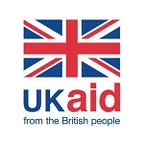A conversation on Data Disaggregation: An Inclusive Revolution?
DFID’s Senior Statistics and Evidence Lead Kim Bradford Smith, and Sightsavers’ Director of Policy and Programme Strategy Dominic Haslam, discuss the role of data collection processes in implementing the Global Goals.
Dominic: Whenever a conversation starts about data and the Global Goals, I start counting the seconds until the “data revolution” is mentioned. Like most revolutions, it promises a great deal to all who will listen. But how revolutionary will the revolution be?
Kim: I’ve never thought of myself as a revolutionist — up there with Che Guevara — but as a development statistician working on how to sensibly monitor the Global Goals and the associated ‘data revolution’ maybe I am!
Dominic: I would argue that to be truly revolutionary, we must focus on specific population groups where data on inclusion is unavailable, out of date or of poor quality, because this will show the inequalities within societies as well as between them.
One such group is people with disabilities. Data is frustratingly scarce on the issue of the inclusion of disability and development in general, but what we do know is that the evidence available points to the widespread exclusion of people with disabilities. But who decides whether someone has a disability or not? How much training will someone need to collect the data? And won’t all this cost too much?
Kim: So, late last year, to discuss just these sorts of issues, we both attended the Washington Group on Disability Statistics in Copenhagen. I met up with an old friend and colleague from the Uganda Bureau of Statistics. We had worked on the 2006 Uganda Demographic and Health Survey, which DFID funded, and which included the Washington Group short set of questions.
As a true statistician, I started to get really excited about the analysis that could be done with this data which has never been really analysed. Did those with disabilities experience higher levels of domestic abuse, have lower education attainment levels, higher maternal mortality levels or reduced access to essential health services?
For me the true revolution is when this kind of disaggregated data paints a picture that policy and decision makers can use to address the demonstrated inequalities — for example, DFID’s work in Tanzania, where we are providing support to a major primary education programme EQUIP-T. The programme works with UNICEF and is piloting techniques to identify out-of-school children, including those with disabilities, using the Washington Group questions.
Dominic: I’d agree that data disaggregation is yielding some interesting results. Another example is in the mid-term review of Sightsavers’ data disaggregation project. The very act of collecting the data has started conversations about how to interact with people with disabilities, never mind how to provide accessible services. These are conversations which haven’t happened before.
This is why data disaggregation is so important — because the act of counting people shows that they count, because any steps taken are an improvement on the currently shocking lack of data or of analysis of available data. And I guess because the first data revolution has to be to put those most marginalised at the top of the priority list. I really look forward to working with DFID, the Washington Group and others engaged in this area and helping to ensure the Global Goals really do leave no-one behind.
Follow Kim and Dominic on Twitter
@KimBradfordSmit @DomHaslam123
Further Information
- Sign up for the DFID Disability Newsletter for quarterly updates on best practice, evidence and news
- Follow DFID Inclusive Societies Department on Twitter DFID Inclusive Societies
- Read the DFID Disability Framework
- Find out more about how to disaggregate disability data
